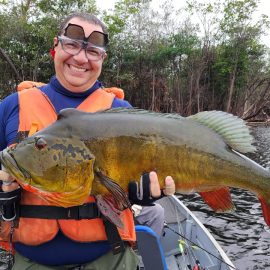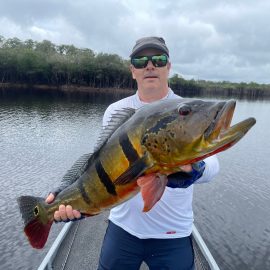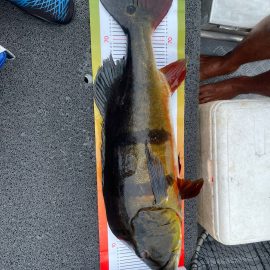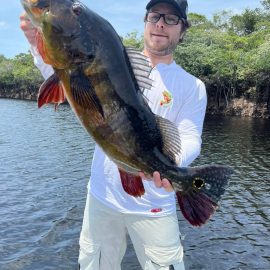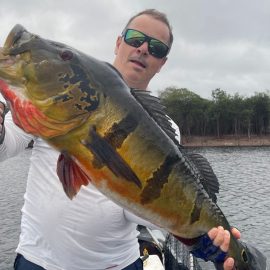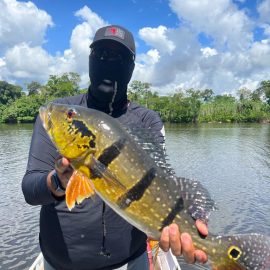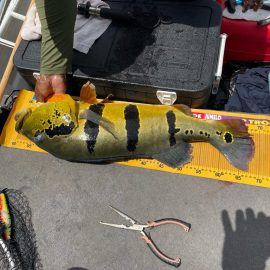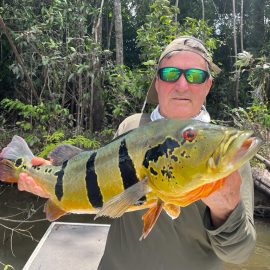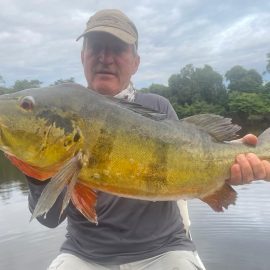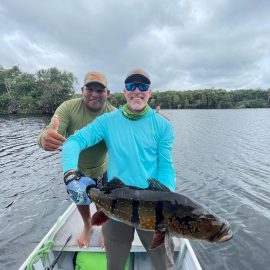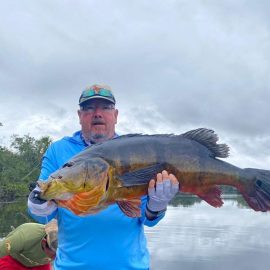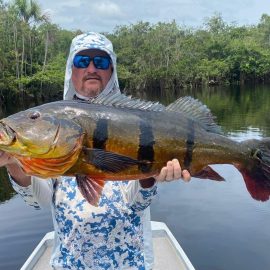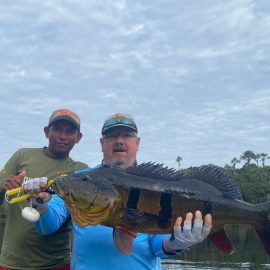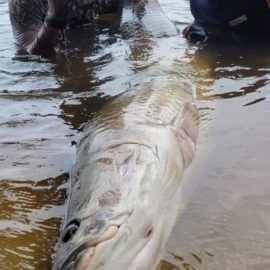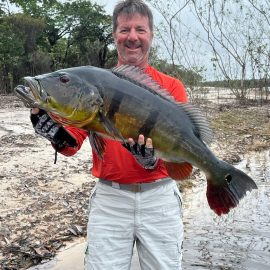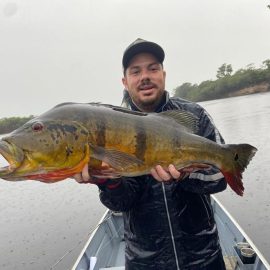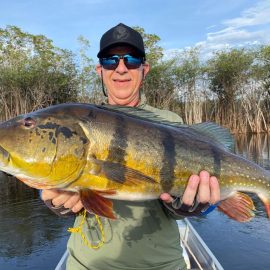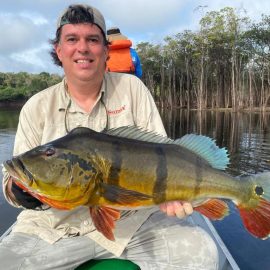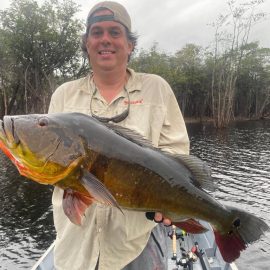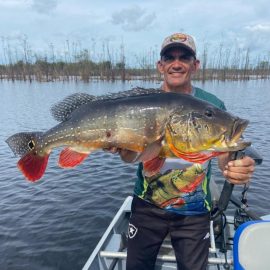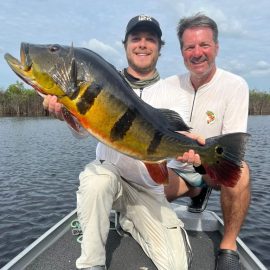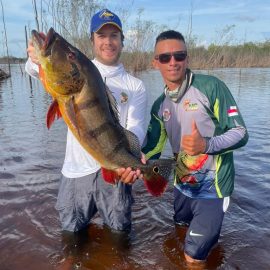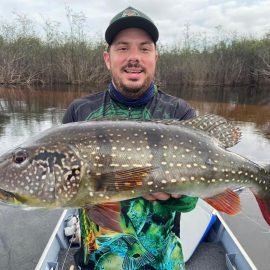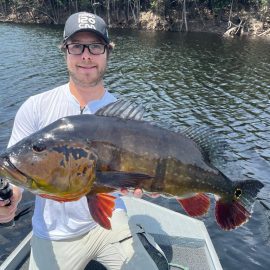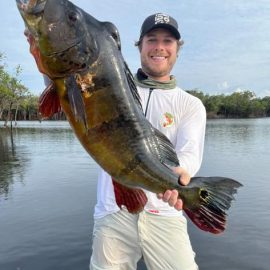FR: October 29-November 5, 2022: Week 14
WE MOOOOVE….
4,050 Peacocks Out Of Remote Honey Holes
Five River Trains are now 500 miles North from where we started the season. Despite rising water levels everywhere, our 5 parties had good fishing.
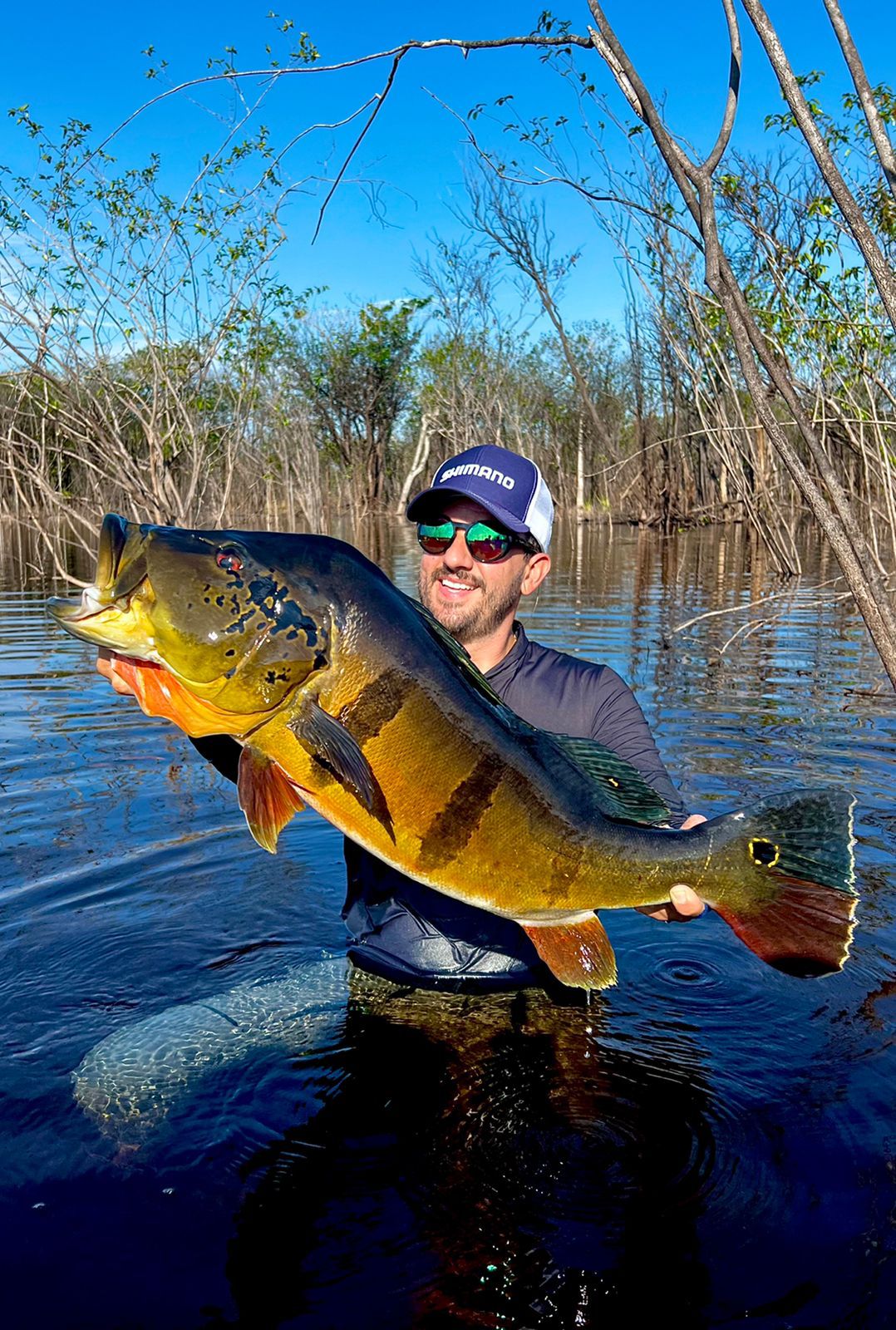
Stats: The total for the week was 4,050 peacocks caught by 40 anglers, divided in 5 parties/River Trains, of which 141 peacocks were between 10 and 16 lbs, 9 between 17 and 19 lbs, 7 between 20 and 22 lbs and the largest at 24 lbs. See the fish tally below, which excludes a wide array of other less aggressive tropical species, such as the arapaima, matrinchã, jacundá, apapá, wolfish, pacú, bicúda, red tail catfish and piranha.
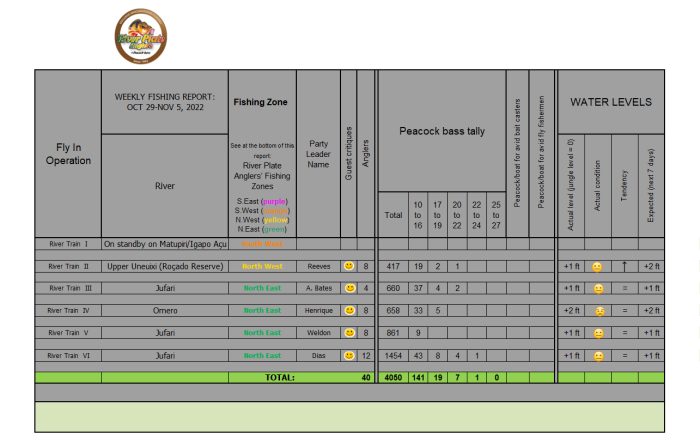 Click on the fishing tally to see it full size
Click on the fishing tally to see it full size
Ammo: The effective lures for bait casters continue to be large (6 inch) noisy top waters props, of any color, and bucktail jigs in grey white with red heads are deadly. For fly fishermen we continue to suggest sinking tippets and long mickey fin streamers for trophies, and poppers for smaller fish.
Guesswork: Expected water levels at our 10 Private Rivers spread out across 4 Dry Zones continue to be very predictable by taking carefully into account La Niña official forecasted rainfall changes.
In the North West Dry Zone (see Dry Zone map below) on the upper Uneuixi River (Roçado) water levels raised to unfishable levels for this week so we switched our arriving Hixon party 600 miles into the South West Dry Zone on the Matupiri & Igapo Açu with lower levels. See the water level drawing below. We will fish this area one or two weeks to see how the other Dry Zones 500-800 miles north play out.

In the North East Dry Zone on the upper Jufaris water levels rose similarily during the week but, water levels 100km downriver presented good fishable conditions, as did also our Omero Lakes fishery. See below the water level drawing for both rivers. But the 10-Day Rainfall Forecast (see further below) is for little rain in this Dry Zone so we expect water levels drop during this week.

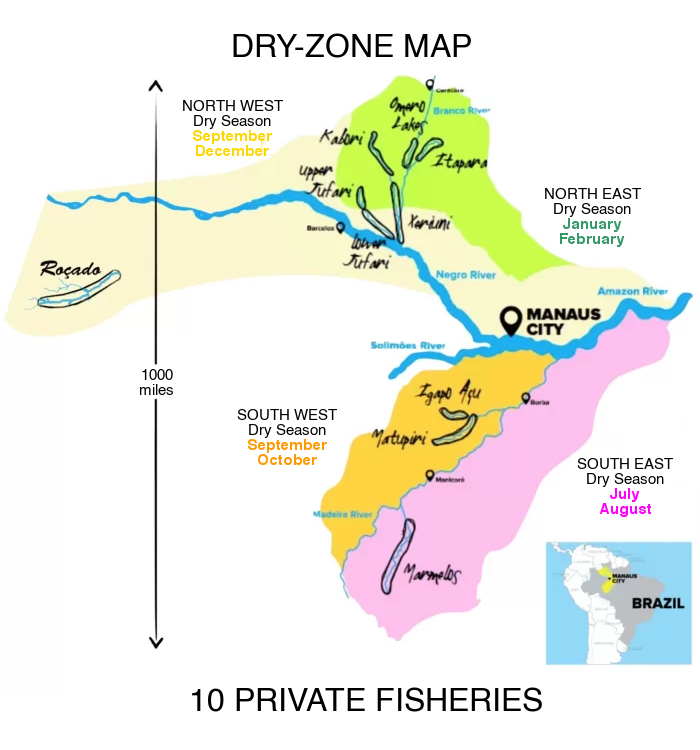
We base our predictions based on the 10-Day Rainfall Forecast (accumulated inches). These forecasts are for the towns listed below in red which affect the zones mentioned. A 10-Day Forecast for more than 2 inches of rain means water levels may rise; under 2 inches means that water levels may drop.
Since the rainfall forecasts in our monitored towns in the North West Zone (Uneuixi) are over or just under 2 inches, we would expect water levels in zone to perhaps rise.
And, since in the North East Zone (Upper Jufaris, Omero etc) are just at 2 inches or less, we would expect water levels in these two zones to lower or maintain their levels.
On the other hand, since forecasts in the South West Zone towns are below 2 inches, we expect water levels to maintain the current low levels rising slightly.
The 10-Day Forecasts for the towns in the North West Zone are as follows:
- Villa Bitencourt: 2.91 inches (Marked as “VB” in the map below)
- Japura: 3.37 inches (Idem “Jap”)
- Santa Isabel do Rio Negro: 1.68 inches (Idem “SIR”)
- Sao Gabriel da Cachoeira: 1.76 inches (Idem “SGC”)
- Maraa: 1.43 inches (Idem “Mar”)
10-Day Forecasts for the towns in the North East Zone are as follows:
- Caracarai: 1.03 inches (Marked as “Cca” in the map below)
- Boavista: 0.91 inches (Idem “Bvi”)
- Rorainopolis: 1.59 inches (Idem “Ror”)
- Novo Airao: 1.07 inches (Idem “NoA“)
- Barcelos: 0.76 inches (Idem “Bar“)
10-Day Forecasts for the towns in the South West Zone are as follows:
- Borba: 1.03 inches (Marked as “Bba” in the map below)
- Novo Aripuana: 1.02 inches (Idem “NA”)
- Autazes: 0.78 inches (Idem “Aut”)
Sources: wunderground.com and accuweather.com
3-Month Rain Anomaly Forecast In Our Four Fishing Dry Zones
(Valid for November-December-January)
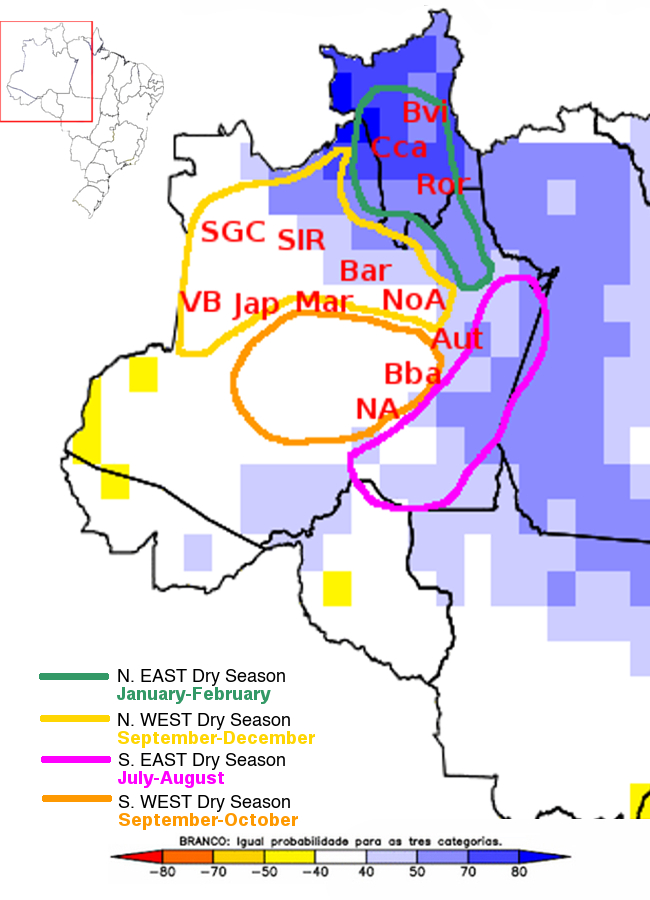
Source: CPTEC/INPE, Brazil
Our water-level predications are not just based on immediate rainfall forecasts but also on longer term (3-month) forecasts for unusual (or what is called anomalous) rainfall across all of our fishing zones. In the above illustration, no unusual rainfall is expected in the white areas for the next 3 months. Note that the North West Zone continues to be in light blue as it did last month, meaning that it is expected to receive more rainfall than normal for this time of the year. In contrast, the South West Zone is almost completely in white, meaning that it should receive the usual rainfall for this time of the year, which could be our FALL BACK to optimize good fishing during January and February in case our private fisheries in the North West Zone such as the Upper Itapara, Upper Xeurini and Upper Jufaris are above the good low water levels for that time of the year.

